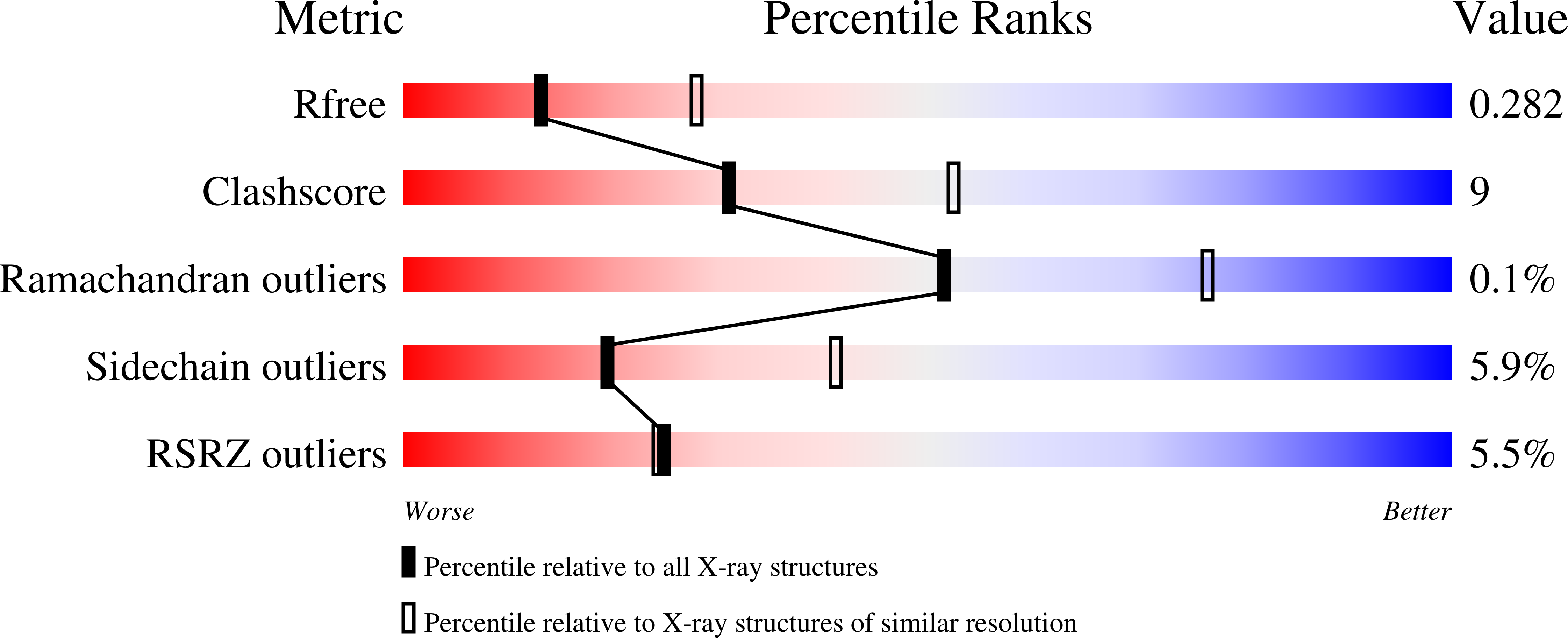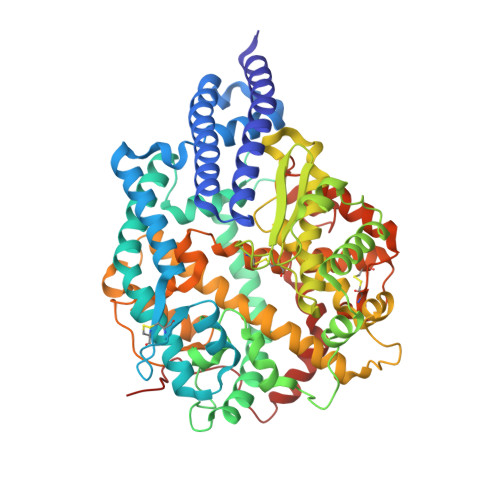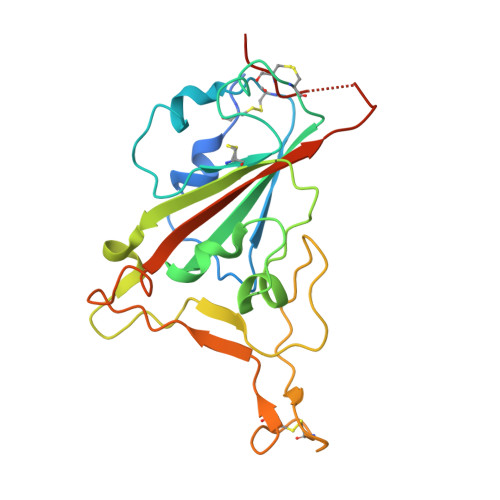Structural evolution of SARS-CoV-2 omicron in human receptor recognition.
Zhang, W., Shi, K., Geng, Q., Herbst, M., Wang, M., Huang, L., Bu, F., Liu, B., Aihara, H., Li, F.(2023) J Virol 97: e0082223-e0082223
- PubMed: 37578233
- DOI: https://doi.org/10.1128/jvi.00822-23
- Primary Citation of Related Structures:
8SPH, 8SPI - PubMed Abstract:
Understanding the evolutionary strategies of the SARS-CoV-2 omicron variant is crucial for comprehending the COVID-19 pandemic and preventing future coronavirus pandemics. In this study, we determined the crystal structures of the receptor-binding domains (RBDs) from currently circulating omicron subvariants XBB.1 and XBB.1.5 (also the emerging XBB.1.9.1), each complexed with human ACE2. We studied how individual RBD residues evolved structurally in omicron subvariants, specifically how they adapted to human ACE2. Our findings revealed that residues 493 and 496, which exhibited good human ACE2 adaptation in pre-omicron variants, evolved to poor adaptation in early omicron subvariants (but with good adaption to mouse ACE2) and then reverted to good adaptation in recent omicron subvariants. This result is consistent with the hypothesis that non-human animals facilitated the evolution of early omicron subvariants. Additionally, residue 486, which exhibited good human ACE2 adaptation in early omicron subvariants, evolved to poor adaptation in later omicron subvariants and then returned to good adaptation in recent omicron subvariants. This result is consistent with the hypothesis that immune evasion facilitated the evolution of later omicron subvariants. Thus, our study suggests that both non-human animals and immune evasion may have contributed to driving omicron evolution at different stages of the pandemic. IMPORTANCE The sudden emergence and continued evolution of the SARS-CoV-2 omicron variant have left many mysteries unanswered, such as the origin of early omicron subvariants and the factors driving omicron evolution. To address these questions, we studied the crystal structures of human ACE2-bound receptor-binding domains (RBDs) from omicron subvariants XBB.1 and XBB.1.5 (XBB.1.9.1). Our in-depth structural analysis sheds light on how specific RBD mutations adapt to either human or mouse ACE2 and suggests non-human animals and immune evasion may have influenced omicron evolution during different stages of the pandemic. These findings provide valuable insights into the mechanisms underlying omicron evolution, deepen our understanding of the COVID-19 pandemic, and have significant implications for preventing future coronavirus pandemics.
Organizational Affiliation:
Department of Pharmacology, University of Minnesota Medical School , Minneapolis, Minnesota, USA.






















